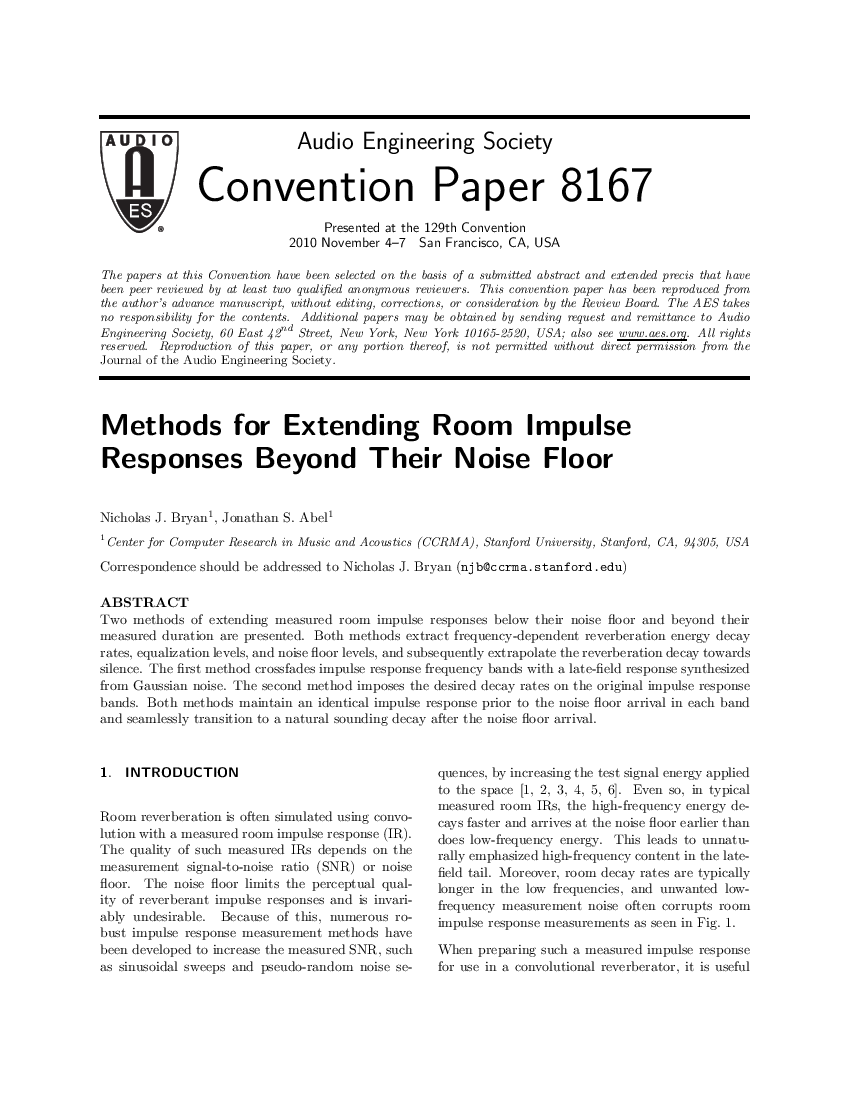Home / Publications / E-library page
You are currently logged in as an
Institutional Subscriber.
If you would like to logout,
please click on the button below.
Home / Publications / E-library page
Only AES members and Institutional Journal Subscribers can download
Two methods of extending measured room impulse responses below their noise floor and beyond their measured duration are presented. Both methods extract frequency-dependent reverberation energy decay rates, equalization levels, and noise floor levels, and subsequently extrapolate the reverberation decay towards silence. The first method crossfades impulse response frequency bands with a late-field response synthesized from Guassian noise. The second method imposes the desired decay rates on the original impulse response bands. Both methods maintain an identical impulse response prior to the noise floor arrival in each band and seamlessly transition to a natural sounding decay after the noise floor arrival.
Author (s): Abel, Jonathan S.; Bryan, Nicholas J.
Affiliation:
Center for Computer Research in Music and Acoustics, Department of Music, Stanford University, Stanford, CA, USA
(See document for exact affiliation information.)
AES Convention: 129
Paper Number:8167
Publication Date:
2010-11-06
Import into BibTeX
Session subject:
Acoustical Measurements
Permalink: https://aes2.org/publications/elibrary-page/?id=15590
(2134KB)
Click to purchase paper as a non-member or login as an AES member. If your company or school subscribes to the E-Library then switch to the institutional version. If you are not an AES member Join the AES. If you need to check your member status, login to the Member Portal.

Abel, Jonathan S.; Bryan, Nicholas J.; 2010; Methods for Extending Room Impulse Responses Beyond Their Noise Floor [PDF]; Center for Computer Research in Music and Acoustics, Department of Music, Stanford University, Stanford, CA, USA; Paper 8167; Available from: https://aes2.org/publications/elibrary-page/?id=15590
Abel, Jonathan S.; Bryan, Nicholas J.; Methods for Extending Room Impulse Responses Beyond Their Noise Floor [PDF]; Center for Computer Research in Music and Acoustics, Department of Music, Stanford University, Stanford, CA, USA; Paper 8167; 2010 Available: https://aes2.org/publications/elibrary-page/?id=15590